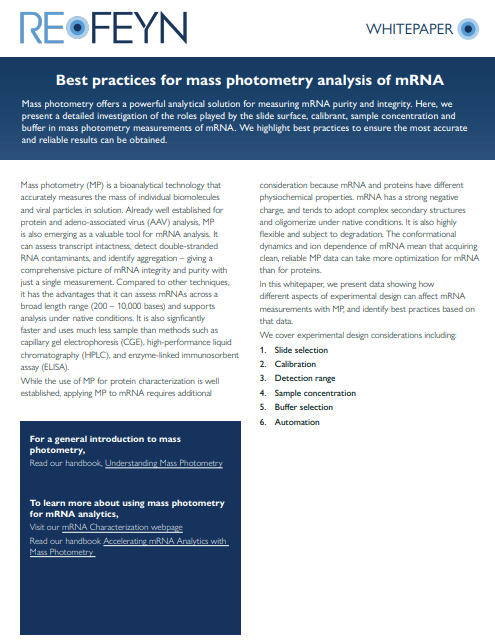Best practices for mass photometry analysis of mRNA
Mass photometry is a powerful, well-established technique for analyzing proteins and adeno-associated viruses (AAVs). It is now gaining traction as a valuable method for characterizing mRNA samples—including large molecules such as self-amplifying RNA (saRNA)—in their native state. This technique delivers insights into key molecular attributes within minutes, using only nanogram quantities of sample.
However, due to the conformational flexibility and ion sensitivity of mRNA, obtaining clean and reliable mass photometry data requires more careful optimization than with proteins. This white paper explores how different experimental conditions impact mRNA measurements and offers practical guidance on designing experiments to ensure robust and reproducible results.

Learning outcomes
- Why functionalized slides are needed for mass photometry measurements of mRNA
- How to calibrate mass photometry measurements of mRNA for accurate mRNA length measurements
- What the detection range of the Two™ mass photometer is for RNA molecules
- How sample concentration affects mass photometry measurements of mRNA
- How buffer parameters affect mass photometry analysis of mRNA, and which buffer is the best choice
- How to automate mass photometry measurements of mRNA with the Two™ mass photometer auto
